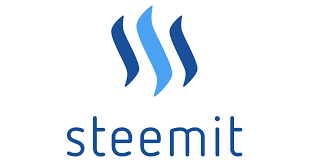Today's "hardfork" (Steem update to version 0.13.0) explained in laymen's terms and why it was important for the community!
After a short discussion within the German community, I noticed that a lot of people were unaware of the hardfork today and the actual details.
So I will try to explain what happened today in basic language for all to understand that might be new to blockchain/cryptocurrencies, esp. Steem.

Steem, like i.e. Bitcoin, is based on a "blockchain" database. I wont go into much detail here. But the basic idea is that every transaction is saved within the blockchain (=big amount of data that contains all transactions) and can't be changed. There's quite a lot of computing power and encryption involved to make the necessary calculations.
That process is called:
Mining
Every transaction within Steem is based on "blocks" of data. As said before, a lot of computing power is necessary by those in the community who support the network and system by actually doing all the work in the background. They are running their computers to calcuate those blocks and check/approve each transaction. This process is called mining and useres who take part in this are rewarded for their service with small amounts of Steem Power (1 SP atm) per block mined. While that sounds like a lot, it takes between several hours to days to mine a single block, depending on how fast your computer is.
Basically: Without "mining" there's no blockchain and no Steem.
(for a more detailed version of that statement, please see the comment of @someguy123 below. I tried to keep my post as simple as possible, but the way I put it, it's not really correct!!! Thanks for that note!)
Hardfork:
Definition:
A permanent divergence in the the block chain, commonly occurs when non-upgraded nodes can’t validate blocks created by upgraded nodes that follow newer consensus rules.
Source: https://bitcoin.org/en/glossary/hard-fork
Let's translate that into laymen's terms:
If the developers decide to change the basic rules of the underlying code (for whatever reasons. Most likely it's security reasons or to add new features/funcions), the "software is changed" so to say.
So every miner has to upgrade to the new version to be able to continue mining. Or there wouldn't be any more transactions.
So, what happened today?
fixed issues:
1. minimal rshares per vote will now be enforced
2. new proof of work algorithm that prevents short cut calculations
We had a major upgrade (hardfork to version 0.13.0). While it didn't do much to the basic system at all and most likely went by totally unnoticed for most, there was quite a big issue that made it possible to misuse and shortcut the mining process quite heavily.
What should have taken hours and days for dozens and hundreds of miners and supply them with Steem Power relatively equally, was cut short and focused a lot of mining-rewards to one single user.
********
The bug was fixed today after @arhag was able to detect that problem and by that did a great service to our community by making it more save and stable!
********
That's one of the main things that makes a crypto-currency strong and safe. An amazing community that does a great job looking out for such issues!
I just wanted to say "Thanks guys!" I know it's hard doing all the tech-stuff and being often overlooked by the majority of its users.
********
If you want to read the main story of what happened, you can find it here. Be aware it contains a lot of tech-"gobbledygook". ;)
Slight correction:
That's somewhat wrong. This isn't like Bitcoin.
The network is actually ran by witnesses - the top 19 witnesses make so much more than miners, the miners are just there to allow people to get something out of the network through computer power, rather than trust/stake.
Blocks are done in "rounds" of 21 blocks. 19 blocks go to the top 19 witnesses in a random order, 1 block goes to a miner, and the final block goes to a RANDOM witness outside of the top 19 (but partially based on their total votes), thus for every 1 block a miner gets, 20 other blocks go to witnesses.
Check out Dan's post here for more information on Witness+Miner Scheduling: https://steemit.com/steem/@dantheman/steem-witness-scheduling-algorithm
Without miners, Steem would probably run just fine.
Thanks mate! I was aware of that, I just wanted to keep it as simple as possible. But you're right. It's not 100% correct the way I put it!